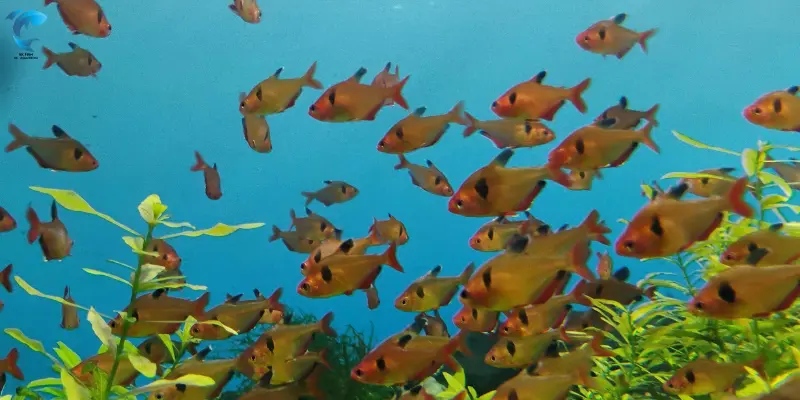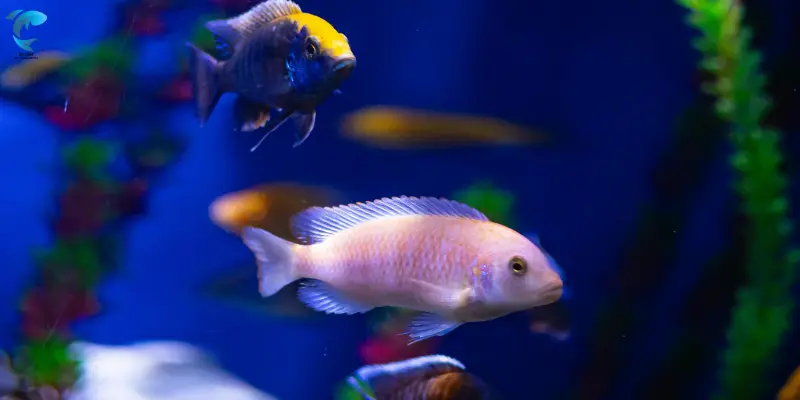Step-by-Step 75-Gallon Aquarium Setup for Beginners
Published: 23 Jun 2025
Setting up a 75-gallon aquarium can be overwhelming for beginners, with many factors to consider, from tank placement to equipment selection. Without the proper guidance, you might have an imbalanced ecosystem, unhealthy fish, or wasted resources. This can lead to frustration and costly mistakes. This article will walk you through a step-by-step process to ensure your 75-gallon aquarium setup thrives.
Introduction
Setting up your first large aquarium can seem intimidating, but with proper planning and the right approach, your 75-gallon tank will become a beautiful underwater world. This comprehensive guide will walk you through each stage of the process.

Planning Phase
Choose the Right Location
- Floor strength: Ensure your floor can support approximately 850+ pounds (tank, water, Substrate, and stand)
- Away from direct sunlight: Prevents excessive algae growth
- Away from heating/cooling vents: Maintains a stable temperature
- Near electrical outlets: For filters, heaters, and lighting
- Against a wall: For support and stability
- Accessible from front and sides: For maintenance and viewing
Essential Equipment Checklist
Basic Setup:
- 75-gallon aquarium tank
- Sturdy aquarium stands rated for 75+ gallons
- An aquarium hood or glass canopy
- Lighting system appropriate for your planned livestock
Filtration:
- Canister filter (rated for 100+ gallons) or
- Hang-on-back filter (2-3 rated for 30-50 gallons each) or
- Sump system for advanced setups
Temperature Control:
- Two 200-300-watt heaters (using two provides redundancy)
- Digital thermometer (more accurate than stick-on types)
Water Treatment:
- Water conditioner (removes chlorine/chloramine)
- Water testing kit (measures pH, ammonia, nitrite, nitrate)
- 5-gallon buckets (for water changes)
- Gravel vacuum/siphon
Decor and Substrate:
- 75-100 pounds of Substrate (gravel, sand, or planted tank substrate)
- Rocks, driftwood, or decorations
- Live or artificial plants
Maintenance Tools:
- Algae scraper or magnet cleaner
- Aquarium-safe glass cleaner
- Filter media replacements
- Long aquarium tongs
- Fish net
Setup Process

Prepare the Stand and Location
- Level your stand using a bubble level and shims if needed
- Place a thin foam pad or mat under the tank (optional but recommended)
- Clean the stand area thoroughly
Install the Tank
- With help from at least one other person, place the empty tank on the stand
- Verify its level in all directions
- Wipe down the inside with clean water (no soap or chemicals)
Add Substrate
- Rinse the Substrate thoroughly in a bucket until the water runs clear
- Add 1-2 inches of Substrate for fish-only tanks or 2-3 inches for planted tanks
- Create depth at the back and sides for visual interest
- Use a plate or bowl when adding water later to avoid disturbing the Substrate
Install Equipment
- Filtration: Set up according to the manufacturer’s instructions
- Heaters: Place heaters at opposite ends of the tank for even heating
- Thermometer: Position where it’s easily visible
- Lighting: Secure to the tank hood or canopy
Add Decorations and Hardscape
- Rinse all decorations with clean water (no soap)
- Place larger items first, ensuring they’re stable
- Create caves and hiding spots for fish
- Leave a swimming space in the central areas
Fill the Tank
- Place a clean plate on the Substrate
- Pour water slowly onto the plate to prevent disturbing the Substrate
- Fill halfway, then add and position any plants
- Continue filling to about 2 inches from the top
Start the Equipment
- Plug in filters and ensure they’re working properly
- Set heaters to 78°F (25.5°C) for tropical community tanks
- Do not turn on lights yet if using live plants (wait 24 hours)
Cycling Process (4-6 Weeks)
Establish the Nitrogen Cycle
- Add water conditioner as directed
- Choose one method to start the cycle:
- Fish food method: Add a pinch of fish food every 1-2 days
- Pure ammonia method: Add enough to reach 2-4 ppm
- Bottled bacteria: Follow product instructions
- Media transfer: Use filter media from an established tank
Monitor Water Parameters
- Test the water every 2-3 days during cycling
- You’ll see:
- Ammonia rise (0.5-4.0 ppm)
- Nitrite rises as ammonia falls
- Nitrate rises as nitrite falls
- The cycle is complete when ammonia and nitrite read 0, and nitrate is present
Perform Water Changes
- 25% water change if ammonia or nitrite exceeds four ppm
- 50% water change once the cycle is complete (before adding fish)
- Always treat new water with conditioner
Adding Fish
Start with Hardy Fish
- Begin with a small number (6-8) of hardy fish like:
- Danios
- Tetras
- Barbs
- Platies
- Corydoras catfish
Proper Acclimation
- Float the fish bag for 15 minutes to equalize the temperature
- Add a cup of tank water to the bag every 5 minutes, 3-4 times
- Use a net to transfer fish (don’t pour bag water into the tank)
Gradual Stocking
- Wait 2 weeks between adding new groups of fish
- Test water parameters before adding more fish
- Follow the inch-per-gallon rule conservatively (about 50-60 inches total for 75 gallons)

Maintenance Schedule
Daily Tasks
- Feed fish appropriately (amount eaten in 2-3 minutes)
- Check temperature and equipment operation
- Observe fish for signs of disease or stress
Weekly Tasks
- Test water parameters (pH, ammonia, nitrite, nitrate)
- Perform a 15-25% water change
- Clean the glass with an algae scraper
- Rinse the filter media in old tank water if needed
Monthly Tasks
- Deep-clean the Substrate with a gravel vacuum
- Trim plants if necessary
- Replace the carbon filter media if using
- Check and clean filter impellers
Troubleshooting Common Issues
Cloudy Water
- White cloudiness: Bacterial bloom – wait it out, ensure good filtration
- Green cloudiness: Algae bloom – reduce light, change water, add live plants
- Brown cloudiness: Suspended particles – improve filtration, check substrate
Algae Growth
- Reduce lighting duration (8 hours max)
- Maintain regular water changes
- Consider algae-eating fish (plecos, otocinclus, nerite snails)
- Test and control nitrate and phosphate levels
Fish Disease Prevention
- Quarantine new fish in a separate tank for 2-4 weeks
- Maintain excellent water quality
- Feed a varied, high-quality diet
- Avoid overstocking

Final Tips for Success
- Be patient during the cycling process – rushing leads to fish loss
- Research fish compatibility before purchasing
- Keep records of water parameters and maintenance
- Join aquarium forums or groups for support
- Perform regular maintenance to prevent problems
- Enjoy the process – this hobby rewards patience and care
By following these steps, your 75-gallon aquarium will develop into a thriving ecosystem that provides years of enjoyment. Remember that successful fishkeeping is about consistency and patience rather than perfection.
FAQ: 75-Gallon Aquarium Setup
For a 75-gallon aquarium, you’ll need essential Equipment such as a high-quality filtration system, a reliable heater, appropriate lighting, and a sturdy stand. You’ll also need Substrate (gravel or sand), decorations, and aquarium-safe plants. Additionally, an air pump, water testing kits, and a water conditioner should be part of your setup to ensure the health of your fish and maintain water quality.
Cycling a 75-gallon aquarium usually takes 4 to 6 weeks. This process is essential to establishing beneficial bacteria in your filter and Substrate that help break down toxic ammonia and nitrites, creating a safe environment for your fish. Patience is key during this stage. Monitoring water parameters regularly will help ensure the cycle is progressing as expected.
A 75-gallon tank offers a lot of flexibility, allowing you to keep a variety of freshwater and saltwater fish. Popular options include tropical fish like tetras, angelfish, and cichlids for freshwater setups or saltwater species such as clownfish, gobies, and tangles. The size of your tank will also allow you to keep multiple fish, but it’s essential to consider their adult size and temperament to avoid overcrowding.
Maintaining water quality in a 75-gallon aquarium requires regular water changes (about 20% of the tank’s volume every 2-4 weeks), proper filtration, and monitoring of water parameters like pH, ammonia, nitrites, and nitrates. It’s also essential to clean the tank, remove any uneaten food, and ensure the filter media is cleaned or replaced. Keeping the tank’s ecosystem stable will help prevent water quality issues.
You can set up a 75-gallon aquarium for freshwater or saltwater environments, but each requires different considerations. For freshwater, you’ll need to focus on plants, Substrate, and fish suited for lower salinity levels. For a saltwater tank, you’ll need specialized Equipment like a protein skimmer, salt mix for the water, and marine fish that can thrive in saltwater conditions. Deciding between the two will affect your setup and maintenance routine.

SK Fish is your trusted source for practical fish care tips and delicious seafood recipes. Our team is dedicated to providing reliable, well-researched content for fishing enthusiasts and home cooks alike.

- Be Respectful
- Stay Relevant
- Stay Positive
- True Feedback
- Encourage Discussion
- Avoid Spamming
- No Fake News
- Don't Copy-Paste
- No Personal Attacks



- Be Respectful
- Stay Relevant
- Stay Positive
- True Feedback
- Encourage Discussion
- Avoid Spamming
- No Fake News
- Don't Copy-Paste
- No Personal Attacks






